Gu Yong Park
Self-supervised Image Denoising with Downsampled Invariance Loss and Conditional Blind-Spot Network
Apr 19, 2023Abstract:There have been many image denoisers using deep neural networks, which outperform conventional model-based methods by large margins. Recently, self-supervised methods have attracted attention because constructing a large real noise dataset for supervised training is an enormous burden. The most representative self-supervised denoisers are based on blind-spot networks, which exclude the receptive field's center pixel. However, excluding any input pixel is abandoning some information, especially when the input pixel at the corresponding output position is excluded. In addition, a standard blind-spot network fails to reduce real camera noise due to the pixel-wise correlation of noise, though it successfully removes independently distributed synthetic noise. Hence, to realize a more practical denoiser, we propose a novel self-supervised training framework that can remove real noise. For this, we derive the theoretic upper bound of a supervised loss where the network is guided by the downsampled blinded output. Also, we design a conditional blind-spot network (C-BSN), which selectively controls the blindness of the network to use the center pixel information. Furthermore, we exploit a random subsampler to decorrelate noise spatially, making the C-BSN free of visual artifacts that were often seen in downsample-based methods. Extensive experiments show that the proposed C-BSN achieves state-of-the-art performance on real-world datasets as a self-supervised denoiser and shows qualitatively pleasing results without any post-processing or refinement.
Transfer Learning from Synthetic to Real-Noise Denoising with Adaptive Instance Normalization
Mar 16, 2020
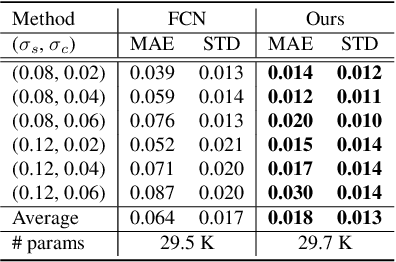
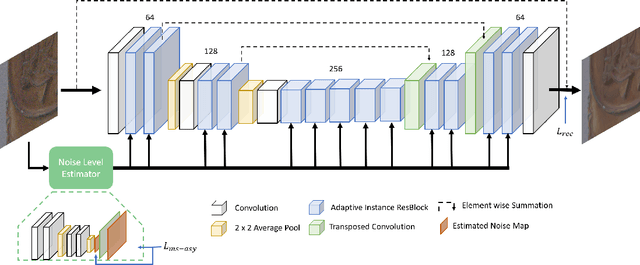
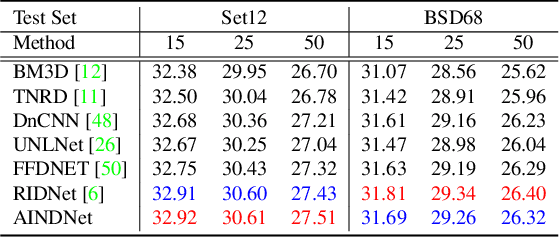
Abstract:Real-noise denoising is a challenging task because the statistics of real-noise do not follow the normal distribution, and they are also spatially and temporally changing. In order to cope with various and complex real-noise, we propose a well-generalized denoising architecture and a transfer learning scheme. Specifically, we adopt an adaptive instance normalization to build a denoiser, which can regularize the feature map and prevent the network from overfitting to the training set. We also introduce a transfer learning scheme that transfers knowledge learned from synthetic-noise data to the real-noise denoiser. From the proposed transfer learning, the synthetic-noise denoiser can learn general features from various synthetic-noise data, and the real-noise denoiser can learn the real-noise characteristics from real data. From the experiments, we find that the proposed denoising method has great generalization ability, such that our network trained with synthetic-noise achieves the best performance for Darmstadt Noise Dataset (DND) among the methods from published papers. We can also see that the proposed transfer learning scheme robustly works for real-noise images through the learning with a very small number of labeled data.
Natural and Realistic Single Image Super-Resolution with Explicit Natural Manifold Discrimination
Nov 09, 2019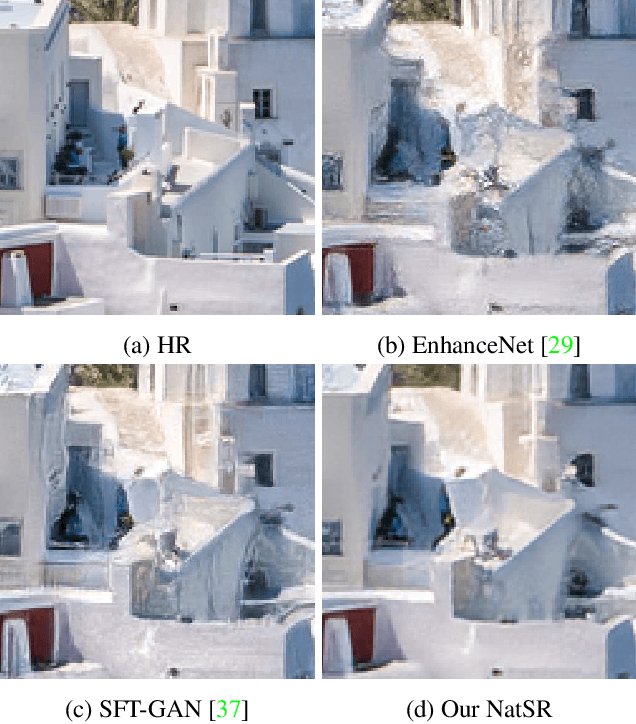

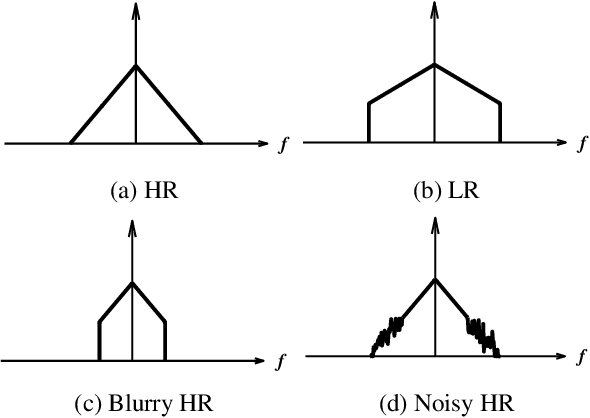
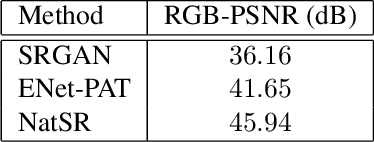
Abstract:Recently, many convolutional neural networks for single image super-resolution (SISR) have been proposed, which focus on reconstructing the high-resolution images in terms of objective distortion measures. However, the networks trained with objective loss functions generally fail to reconstruct the realistic fine textures and details that are essential for better perceptual quality. Recovering the realistic details remains a challenging problem, and only a few works have been proposed which aim at increasing the perceptual quality by generating enhanced textures. However, the generated fake details often make undesirable artifacts and the overall image looks somewhat unnatural. Therefore, in this paper, we present a new approach to reconstructing realistic super-resolved images with high perceptual quality, while maintaining the naturalness of the result. In particular, we focus on the domain prior properties of SISR problem. Specifically, we define the naturalness prior in the low-level domain and constrain the output image in the natural manifold, which eventually generates more natural and realistic images. Our results show better naturalness compared to the recent super-resolution algorithms including perception-oriented ones.
 Add to Chrome
Add to Chrome Add to Firefox
Add to Firefox Add to Edge
Add to Edge